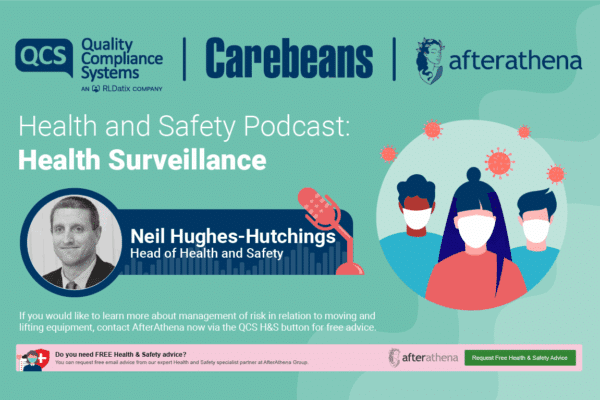The Care Quality Commission has released an important report that summarises their views on the first round of inspections completed on social care services between 2014 and 2017. It makes for interesting reading.
You can find the full report here: http://www.cqc.org.uk/publications/evaluation/state-adult-social-care-services-2014-2017
The Data
The report is based on the information they gathered during the 33,000 inspection completed during the 3-year period. In it they come to conclusions about where services are performing well and where they need to improve. They also give some examples of how to improve.
It is important to recognise how important social care is to society as a whole. Over 16,000 services accommodating over 460,000 people! More widely, all people using social care services are being supported by 1.4 million care workers, which equates to over 5% of the total workforce in England. These are indeed big numbers and bring home the hugely important role that social care plays.
Tipping Point
The report also states that social care in England is ‘approaching a tipping point’. This is being driven by a growing and ageing population, more people with increasingly complex conditions and all this in an increasingly challenging economic climate with greater demand on services and more problems with accessing care.
Indeed, Andrea Sutcliffe has stated that:
“While this report focuses on our assessment of quality and not on the wider context, with the deterioration we are seeing in services rated as Good together with the struggle to improve for those with Inadequate and Requires Improvement ratings, the danger of adult social care approaching its tipping point has not disappeared. If it tips, it will mean even more poor care, less choice and more unmet need for people.”
Anyway, what does the report say about social care?
- Almost four out of five adult social care services in England were rated as Good or Outstanding overall.
- Nearly a fifth of services were rated as Requires Improvement.
- 2% of services are still rated as Inadequate.
- Only 2% are rated Outstanding.
- There are regional differences in performance, with the East of England showing almost 10% more locations rated as Good or Outstanding than the North West.
- Of the five key questions, Safe and Well-led have the poorest ratings.
- Caring was the best rated key question – 92% good and 3% outstanding.
- Community social care services (such as supported living and Shared Lives) were rated the best overall.
- Nursing homes remain the biggest concern.
- Generally, smaller services that are designed to care for fewer people were rated better than larger services.
An Increased Focus on Encouraging Improvement
When the figures are interrogated in a bit more detail there are some concerns particularly about services rated as requires improvement – on second inspection 38% remained at the same rating and hadn’t improved, and indeed 5% had got worse and were rated inadequate.
Another worrying trend was that 26% of services that were originally rated as good received a poorer rating at the next inspection.
As a result of this, the CQC have stated that they are going to have an increased focus on services rated as requires improvement to try and encourage improvement.
Across the range of services inspected nursing homes performed worst with only 67% rated as good and 1% as outstanding, with 29% rated as requires improvement and 3% as inadequate.
Smaller Services – Better Ratings?
It is also interesting to note that the smaller a service is the more likely it is to receive a better rating, CQC do not provide an analysis or detailed reasoning for why they think this is the case, but ratings are based upon the evidence provided under the 5 key questions – and there are potentially links to poorer leadership, culture and staffing levels and turnover in larger services.
What Services Can Learn
The CQC detail what services can learn from the findings of the report, and they state that:
- All providers can learn from high-quality care services and should know what to do to avoid poor care.
- Strong leaders have a pivotal role in high-performing services.
- Leaders that have a strong vision and values communicated this to all staff, encouraging a culture of openness and transparency.
- Positive and supportive cultures are characterised by staff who were well trained, caring, skilled, dedicated, enthusiastic and focused on positive outcomes for people.
- A key theme that shone through in terms of high-quality services and improvement was a clear focus on person-centred care.
Enforcement Action
In the report the enforcement undertaken by the CQC has been broken down by regulation, and this makes for interesting reading.
With the most action being taken when good governance hasn’t been evidenced on inspection, followed by safe care and treatment, staffing, person-centred care, safeguarding, consent and dignity and respect.
In addition, the CQC give examples where successful prosecutions have taken place. These include falls from a shower chair, falls from bed, burning on radiators and when wrong medication was administered. As you can see, these are all avoidable and indicators of poor governance, management, auditing and possibly staff training or the understanding of a person’s care needs.
The CQC are clear in their report of the importance of a high-quality, dedicated manager supported by an enthusiastic staff team and understanding senior management or owners.
From section 5.3, page 45:
“Of the 1,830 originally good locations that we have re-inspected (some planned as part of our timetable for return inspections but mainly prompted by concerns), only 1% had improved to outstanding. In 73% of cases, there had been no change, but in 26% of cases, quality had deteriorated, resulting in a rating of requires improvement (22%) or inadequate (4%).”
Important Reading for Your Service
I strongly urge you to read the report to understand more about the issues raised, and the findings from CQC. It will help you understand where issues can go wrong, and what the CQC are going to be focussing on in the next round of inspections. Also in the report, there are numerous examples of how to improve – which you will be able to replicate.
What is clear is that CQC are going to continue with their inspection routine and inspect under the 5 questions. So, again, I would urge you to be aware of the regulator and what their agenda is – and be prepared as ‘ignorance is no excuse’.
Please use your QCS system to its fullest capability to increase your understanding and to embed best practice and widen the understanding of all staff.






